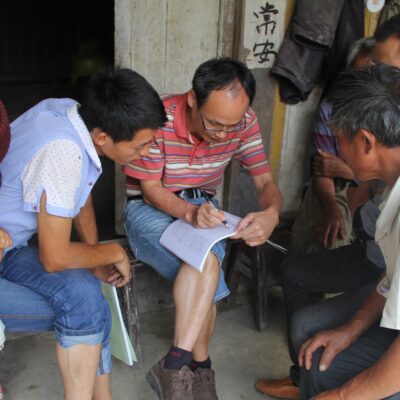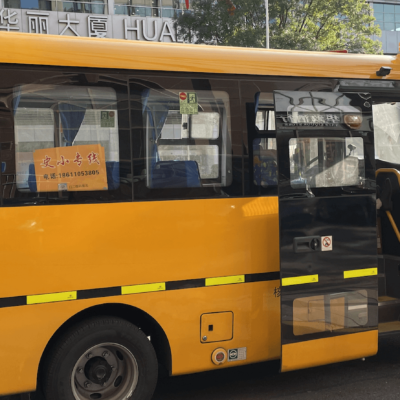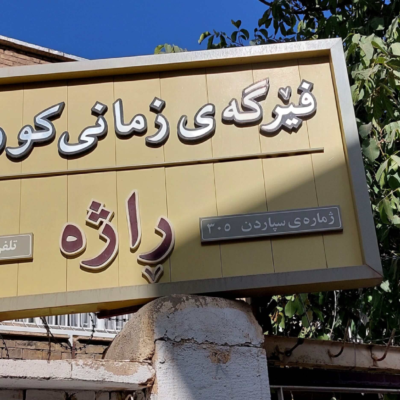Language policy in Pakistan has been controversial since it came into being as a nation in 1947.
Pakistan is a multilingual country where more than 70 languages are spoken. Urdu has status as a ‘national language’ in Pakistan’s Constitution, and Sindhi, Punjabi, Pashto, Baluchi, and Seraiki are major regional languages. English is the official language, which reflects Pakistan’s colonial history.
The suppression of the Bengali language
Pakistan’s founder Mohammad Ali Jinnah wanted to unite diverse ethnic groups by adopting Urdu as the national language. Jinnah was quoted as saying:
‘.. whether Bengali shall be official language of this province is a matter for the elected representatives of the people of this province to decide. … But let me make it very clear to you that the state language of Pakistan is going to be Urdu and no other language. Anyone who tries to mislead you is really the enemy of Pakistan. Without one state language, no nation can remain tied up solidly together and function. Look at the history of other countries. Therefore, so far as the state language is concerned, Pakistani language shall be Urdu’.
This policy met resistance in East Pakistan where the Bengali-speaking majority lived. Many protested Urdu dominance, and several students were killed outside the University of Dhaka on February 21, 1952. A Pakistani writer, Tariq Rahman writes Pakistan’s Urdu-speaking elites preferred Urdu as a national/state language at the expense of Bengali and other languages. Consequently, according to scholars of history, Rizwan Ullah Kokab and Massrrat Abid, Bengali-speaking students in East Pakistan ‘demanded the use of Bengali in education, in the courts of law, and in administration during their anti-Ayub agitation in 1968 and early 1969.
Conflict over language, and other issues eventually led to the separation of East Pakistan which became Bangladesh on March 26, 1971. According to several Pakistani researchers, Mussarat Jabeen, Amir Ali Chandio, and Zarina Qasim, conflict over language was a major factor in the disintegration of Pakistan.
Dutch anthropologist Oskar Verkaaik describes this ideological process of supporting Urdu as ‘ashrafization’ in his book Migrants and Militants: Fun and Urban Violence in Pakistan. Verkaaik claims ashrafization is a ‘long-term process of making Urdu the language of cosmopolitanism and distinction’. He also argues that this process has resulted in other regional languages, such as Bengali (now used in Bangladesh) and Sindhi, being deemed ‘inferior’.
Even after the separation of East Pakistan from West Pakistan, different ideological discourses have continued. Unfortunately, satisfactory steps have not been taken to promote a mother tongue-based multilingual education model to address linguistic concerns of minority language groups.
The struggle for linguistic dominance between pro-English and pro-Urdu groups
Pro-Urdu groups are of the view that Urdu can preserve Pakistan’s religious and ideological values, in contrast to English which is preferred by westernised Pakistanis. Pro-Urdu groups view English as a sign of slavery due to its colonial origins and advocate for Urdu to replace English as a medium of instruction in schools.
The divide between these groups is also a socio-economic one: it is common in Pakistan for upper middle-class parents to send their children to schools where the medium of instruction is English, while many lower middle-class parents send their children to schools where the medium of instruction is Urdu.
In 1973, the Constitution of Pakistan recognised Urdu as the only national language and recommended it be Pakistan’s official language. Article 251 of the Constitution states that ‘The National language of Pakistan is Urdu, and arrangements shall be made for its being used for official and other purposes within fifteen years’ replacing English. However, this has not occurred.
In 1980s, Tariq Rahman argues that the era of military dictator Zia-ul-Haq witnessed a continuing struggle for hegemony between proponents of Urdu and English: the English-speaking elites resisted Zia’s pro-Urdu monolingual policy and advocated for English as a medium of instruction and communication.
In 2015, the Supreme Court of Pakistan, bearing in mind Article 251 of Pakistan’s Constitution, ordered both the federal and provincial governments to make Urdu the official language within three months. However, this has not happened despite political pressure, including the efforts of Dr Sharif Nizami, an activist of the political party, Jamait-e-Islami, who runs an organisation called Pakistan Qaumi Zaban Tehreek (National Language Movement of Pakistan).
A British Council survey in 2014 estimated that approximately 49 percent of Pakistanis speak English. Many among the English-speaking class argue that the rapid pace of globalisation has made it necessary to learn and use English because it helps facilitate intercultural communication and global integration. Pakistani academic Syed Abdul Manan argues that driven by neoliberal ideology, English language schools and academies are increasing in Pakistan because learning English is associated with social prestige and economic capital.
The ideological discourses around Urdu and English have sometimes clashed when it comes to operationalising language education, governance, and public policy. Proponents of Urdu are countering the influence of English while also promoting their own ideological discourse regarding regional languages.
Linguistic activism relating to local language groups
Regional language activists have become more vocal about their language rights and are emphasising the importance of the role of mother tongues in education. The United Nations has endorsed the right of access to education through the mother tongue. The 18th Amendment to Pakistan’s Constitution in 2010 gave provinces autonomy to decide on the medium of instruction in their educational institutions. But so far not much has been done to address the smaller language groups’ linguistic concerns.
Sindhi language activists continue to advocate for Sindhi to be a national language. In 1972, The Sindhi Act gave official status to the Sindhi language, however, again this legal change does not represent the reality of the use of Sindhi in Pakistan. In 2016, Lakhu Lohana, a member of World Sindhi Congress, stated ‘there is a history of apartheid and criminal discrimination against Sindhi language that continues to date. Urdu is the mother tongue of less than one percent. Sindhi people have waged a historical struggle to save their language’. In March 2019, the Provincial Assembly of Sindh passed a resolution calling on the Sindh government to ensure that the Sindhi language is taught as a compulsory subject in all private schools .
In Khyber Pakhtunkhwa, the medium of instruction is Urdu (66 percent), Pashto (30 percent) and English (three percent). In 2014, Pakistan Tehreek-e-Insaaf (a ruling party in Khyber Pakhtunkhwa) changed the medium of instruction from Urdu to English in the province’s educational institutions. Pashto, Seraiki, Hindko, Torwali, Chitrali, and many other minor languages have been neglected in provincial education policy.
Baluchi language activists are also active in campaigning for their language rights. In Baluchistan province, even though Baluchi is the language of the majority, it is not the official language and Urdu is the medium of instruction in all government schools. One German-based Baluchi language activist reportedly stated ‘Urdu is the language used in Pakistani schools. In Baluchistan also, they are using Urdu language books …. It’s shameful to say that I am a Baloch. My language is Balochi, but sorry, I can’t read or write in Balochi because I was never allowed to learn my own language, it is forbidden’. The Baluchi language along with other provincial languages, such as Pashto, Brahui, and Hazargi, continues to be neglected.
In the Punjab, two major languages, Punjabi and Seraiki, along with Urdu are spoken. Urdu or English is the medium of instruction in schools, and Punjabi and Seraiki language activists would like this changed.
Pakistan’s Single National Curriculum of 2020 will probably discourage the use of minority languages. The policy, proposed by the Ministry of Federal Education and Professional Training, makes specific reference only to the teaching of English and Urdu. It states ‘Social Cohesion and National Integration’ are key aims; along with a ‘fair and equal’ opportunity for all children to receive a high quality education. Minor languages which include Bagri, Aer, Dhatki, Dawoodi, Balti, Shina, and many others are neither mentioned nor recommended as a medium of instruction. The policy proposal claims that certain languages are not developed enough to be used as a medium of instruction.
This new educational policy proposal reflects how ideological discourse determines language policy and how language policy can be used to discredit some languages.
Ways forward
It is clear that different ideological discourses have influenced language education policy in Pakistan. English and Urdu are dominant, while other languages have been neglected or marginalised. Steps need to be taken to teach children in their mother tongues as this should be their inalienable right.
Ashrafization, the process of making a language cosmopolitan and distinct tends to result in the marginalisation of local languages and their speakers: the more powerful ideology influences language policy and in turn reinforces and safeguards that ideology. Unfortunately, this is very harmful in a multilingual state.
Considering only some languages as worthy of being medium of instruction while dismissing other languages as incapable of being so, appears to be a colonial legacy in Pakistan’s language policy. Similarly, British colonial administrators in India, such as Thomas Babington Macaulay prioritised English over Indian languages.
Although it may be impossible not to prioritise some languages over others, this must not lead to complete neglect of minor languages. Non-governmental organisations, The Citizens Foundation and Thar Foundation reported in 2021 that Pakistan’s literacy rate might be increased if a mother tongue based multilingual education model is adopted. Space must be made for regional languages and a truly functional mother tongue-based education model.
Language should not be imposed from the top echelons of power; rather language policy needs to address on-the-ground realities and seek inspiration from the people. Language policy makers should consider the linguistic concerns and demands of local language groups.
An inclusive language policy is recommended so that students can be educated in their respective mother tongues, at least in the first few formative years of a child’s education. This may be achieved by devolving the authority of language policy-making from the central/provincial government to regional or local governments.
Authors: Ameer Ali and Professor Maya Khemlani David
Image: Street scene in Lahore. Credit: Guilhem Vellut/Flickr.




